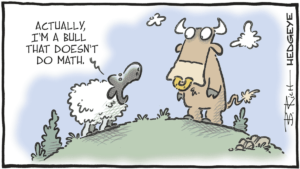Be A Successful Investors
April, 25 2024Sticking to a plan, even in challenging times, can help you now and in the future.
Keynotes
- Creating a financial plan can help you make better decisions about investing and saving.
- It’s important to stick to your plan, even when financial markets are turbulent.
- Follow us we can help you set goals and create a plan, regardless of how much money you have to invest.Also check Well-Informed Investors and Successful Investors
Investing is not about “getting rich” or “playing the market.” It’s an essential part of achieving financial wellness. That means being able to meet your needs and the needs of those who depend on you as well as being able to set and achieve goals that go beyond merely being able to pay your bills and manage debts like mortgages, credit cards, and student loans.
These 4 steps can help you increase your investing success and achieve financial wellness, even when financial markets seem unfriendly.
1. Start with a plan
Creating a financial plan can provide the foundation for investment success. The financial planning process can help you take stock of your situation, define your goals and figure out practical steps to get there.
Financial planning doesn’t have to be fancy or expensive. You can do it with the help of a financial professional or an online tool kit. Either way, making a plan based on sound financial planning principles is an important step.
A plan is one service that financial professionals frequently offer their clients.
2. Stick with your plan, even when markets look unfriendly
When the value of your portfolio falls, it’s only human to want to run for shelter. But the best investors don’t. Instead, they maintain an allocation to stocks they can live with in good markets and bad.
The financial crisis of late 2008 and early 2009 might have seemed a good time to run for safety in cash. But a Fidelity study of 1.5 million workplace savers found that those who stayed invested in the stock market during that time were far better off than those who headed for the sidelines.
In the decade following the crisis, those who stayed invested saw their account balances—which reflected the impact of their investment choices and contributions—grow 147%. That’s twice the average 74% return for those who fled stocks during the fourth quarter of 2008 or first quarter of 2009.
While most investors did not make any changes during the market downturn, those who did made a fateful decision with a lasting impact. More than 25% of those who sold out of stocks never got back into the market and missed the gains that followed.
If you get anxious when the stock market drops, remember that’s a normal response to volatility. It’s important to stick with your long-term investment mix and to have enough growth potential to achieve your goals. If you can’t tolerate the ups and downs of your portfolio, consider a less volatile mix of investments that you can stick with.
3. Be a saver, not a spender
While it’s easy to get caught up in the ups and downs of the market, it’s also important to think about how much of your income you are putting away for the future. Saving early and often can be a powerful force when it comes to making progress toward long-term financial goals.
As a general rule, Fidelity suggests putting away at least 15% of your income for retirement, including any employer match.2 Of course, that number is just a starting point, for some people it will be lower and for some people it will be higher. But regardless, there is evidence that saving more and starting earlier help people reach long-term goals.
4. Diversify
We believe one key foundation of successful investing is diversification (owning a variety of stocks, bonds, and other assets), which can help control risk.
Having an appropriate investment mix, giving you a portfolio that delivers growth potential with a level of risk that makes sense for your situation, may make it easier to stick with your plan through the ups and downs of the market.
Diversification cannot guarantee gains, or that you won’t experience a loss, but it does aim to provide a reasonable trade-off between risk and reward. You can not only diversify among stocks, bonds, and cash, but also within those categories.
Consider diversifying your stock exposure across regions, sectors, investment styles (value, blend, and growth), and size (small-, mid-, and large-cap stocks). For bonds, consider diversifying across different credit qualities, maturities, and issuers.
Stay tuned
*source Fidelity Investment



